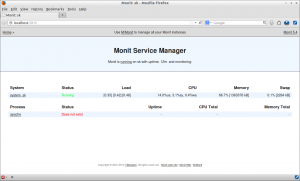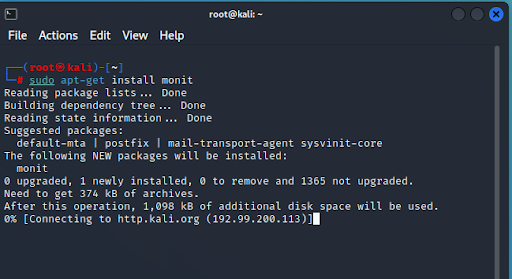

In order to start, stop or restart the service, use these following commands: sudo systemctl start sudo systemctl stop sudo systemctl restart monit Enable the monit built-in web server Jan 10 06:25:02 machine systemd: Reloaded LSB: service and resource monitoring daemon. Jan 10 06:25:02 machine monit: Reloading daemon monitor configuration: monit. Jan 10 06:25:02 machine systemd: Reloading LSB: service and resource monitoring daemon. └─18228 /usr/bin/monit -c /etc/monit/monitrcĭez 26 06:25:02 machine systemd: Reloading LSB: service and resource monitoring daemon.ĭez 26 06:25:02 machine monit: Reloading daemon monitor configuration: monit.ĭez 26 06:25:02 machine systemd: Reloaded LSB: service and resource monitoring daemon. Loaded: loaded (/etc/init.d/monit generated vendor preset: enabled)Īctive: active (running) since Wed 11:47:39 CEST 3 months 13 days ago rvice - LSB: service and resource monitoring daemon.In order to check if monit is running, you can use systemctl to do so: sudo systemctl status monit Monit comes with it’s own built-in web service. Compared to Nagios or Icinga, you don’t need an installed Apache web server.
#Linux monit config install
Or if you’re an openSUSE user, you can install monit like this: sudo zypper ref & sudo zypper in monit
#Linux monit config update
With the following command you install monit on a Ubuntu / Debian machine: sudo apt-get update & sudo apt-get install monit Monit is available for most Linux distribution. In combination with a configuration management like Ansible (I’ve already created an article about Ansible a long time ago) you have an easy central to use monitoring tool with automatically distributed configuration files. While you have to dig through a bunch of files in order to create a simple check in Nagios, monit allows you to simply put one (human readable) configuration file in the correct directory and the check is ready to use. Well, you just setup another monit instance which is checking if the destination is pingable, just like with Nagios / Icinga / check_mk.Ī real benefit for monit is it’s easy configuration and syntax. You now may think “but how do I even test if the server is available?” (the remote ping which is executed by Nagios).

The initiator however is not locally, it’s a different (remote) server. So basically the server executes local commands like monit. If the check exceeds it’s given limit, Nagios / Iciniga / check_mk creates an E-Mail and send it to the user /group of users which is / are responsible for this service. The console output is then used for analysis. In the first moment this sounds like a disadvantage whether it be due to reliability or security, but think about it for a second: What does Nagios, Icinga or check_mk basically do? They ping the destination machine and if this ping is successful it opens up an NRPE or SSH connection and executes the given CPU, Ram, service checks and so on, locally. So basically that means that wherever monit is installed, it checks locally and reports the results via mail. While Nagios, Icinga and check_mk needs a monitoring server which connects in given time periods to the machines it checks, monit doesn’t need this kind of server in order to do these checks.


Monit works differently than Nagios or Icinga. How does monit works? And why not just use Nagios? However, just because the configuration is more simple, that doesn’t mean hat you are limited in the ways you monitor your servers with Monit. Monit is one of these simple monitoring tool. Especially if you are a private person and you want to monitor your vServer, Raspberry Pi or whatever, you may want to use a smaller and easier monitoring solution than those big three. Besides Nagios, Icinga and check_mk there are some other, more slimmer tools to monitor servers.


 0 kommentar(er)
0 kommentar(er)
